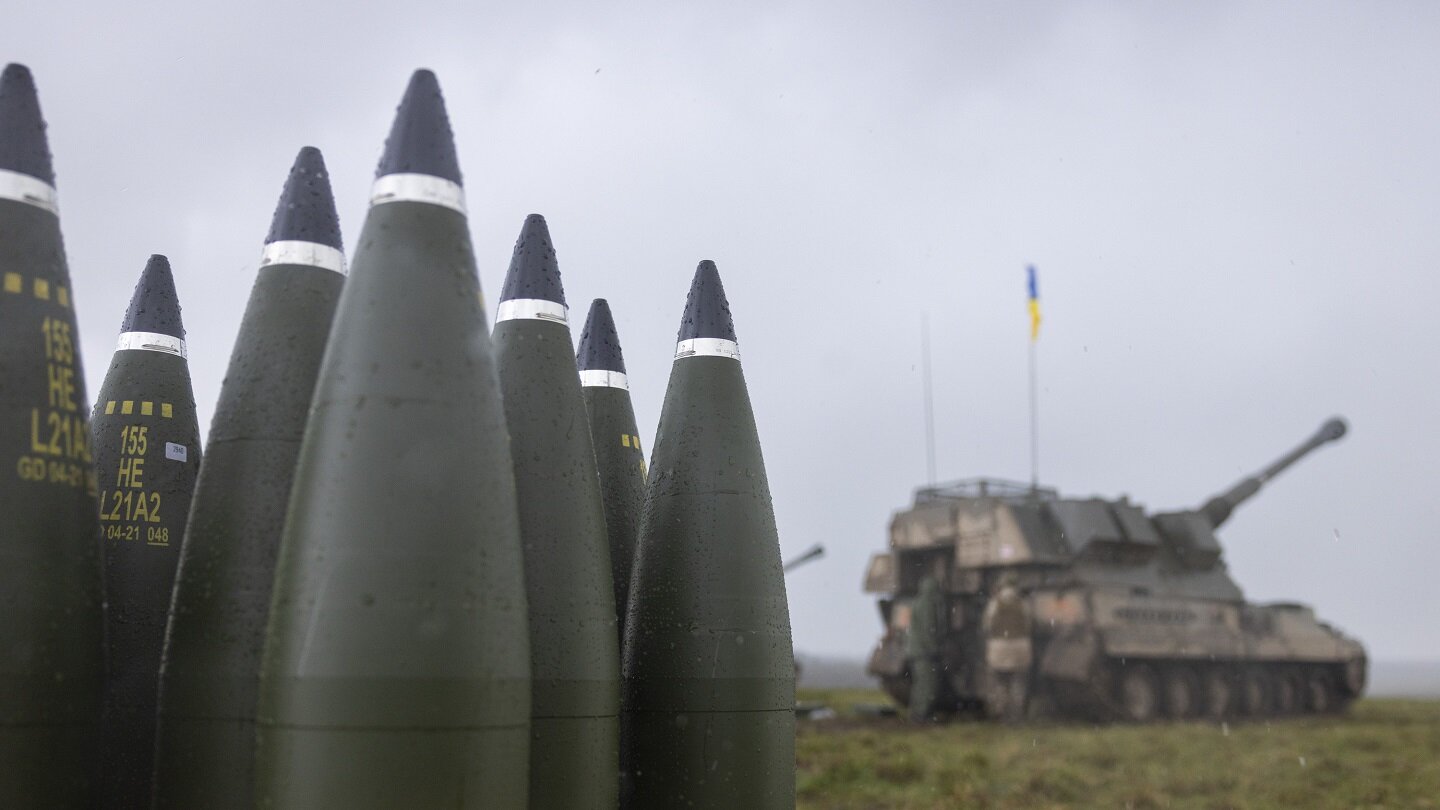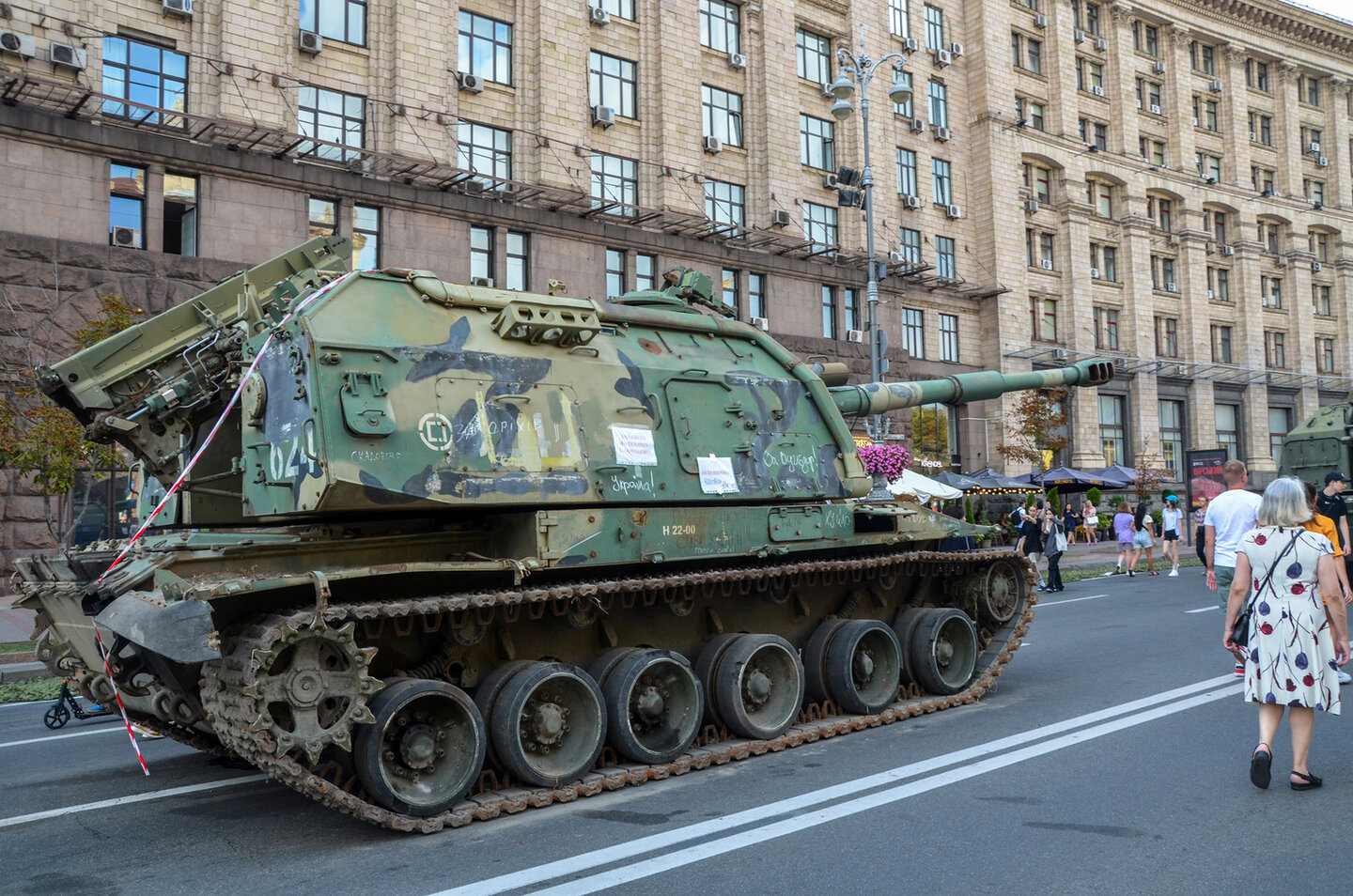Feature
Analysis: Western artillery provision to Ukraine
Western allies have pledged or provided more than 800 artillery systems to Ukraine since 2022, with an approximate high of 937 units. Richard Thomas reports.

The UK has donated at least 60 of its remaining 155mm self-propelled howitzers to Ukraine. Credit: UK MoD / Crown copyright
The scale of military assistance being provided to Ukraine by Nato allies and sympathetic nations as Kyiv continues its fight against Russia following Moscow’s 2022 invasion can be difficult to gauge, as countries continue their pledge and provision of systems, perhaps most crucially, long-range fires and artillery.
By researching available open-source information (OSINT) as well as insight from within GlobalData’s defence desk, Global Defence Technology has been able to determine a range of artillery systems provided or pledged to Ukraine.
Where possible, data has been derived from existing articles and analysis written by GlobalData’s defence desk. In areas where this has not been possible, information from the Kiel Institute for World Economy has been utilised, as well as official national government sources including US, UK, German, and Norwegian documents.
The topline figure indicates that Western Nato members and other allies of Ukraine have provided between 805 to 937 artillery or multiple launch rocket systems (MLRS), ranging from 105mm vehicle drawn short-range tactical platforms such as the L118, medium range 155mm self-propelled howitzers, through to long-range guided MLRS (GMLRS) such as the HIMARS or M270 systems.
The number of MLRS systems is necessarily smaller but offer the potential for longer range strikes against targets, with munitions such as the ATACMS, compatible with the M270 or HIMARS launchers, having an official range of 300km, and likely further.
Calculating equipment losses through combat or accidents is difficult to determine as Ukraine does not release central figures on destroyed platforms. However, OSINT specialist Oryx has been tracking losses of both Ukrainian and Russian equipment in the war, indicating that hundreds of Western-donated Ukrainian artillery and MLRS systems have been destroyed in combat operations.
Artillery disparity with Russia
Ukraine’s need for artillery systems has been demonstrated in operations throughout 2024, with a six-month delay in US support the primary reason for Russia’s ability to seize the initiative on the battlefield and push Ukrainian forces back from a number of key towns.
Official French figures also calculated that for every six Russian artillery shells fired, Ukraine is able to fire a single round, indicative of a supply disparity despite Nato’s support of Kyiv.
Calculating Russia’s own artillery capabilities is difficult, with little in the way of official figures post-2022 outlining orders of battle, without taking into account equipment lost in combat over the past two-and-a-half years.

A captured Russian Msta-S self-propelled artillery system on display in Kyiv in 2023. Credit: Dmytro Stoliarenko / Shutterstock.com
According to pre-war information from GlobalData, Russia’s defence budget was boosted to $48.6bn in 2021. In accordance with the pre-Ukraine invasion scenario, the Russian defence budget was anticipated to increase from $43.3bn in 2023 to reach $46.9bn in 2027 reflecting a compound annual growth rate of 2.1%.
It is unknown exactly how much of Russia’s GDP is now committed to defence. However, Russia has moved to a wartime stance with Western officials estimating that around 40% of the country’s economy is now committed to security and defence purposes.
In February 2024, a commentary by Dr Jack Watling and Nick Reynolds for the UK’s Royal United Services Institute defence think tank said that Russia had just under 6,000 artillery and MLRS pieces in the field, comprised of “approximately 4,780 artillery pieces, of which 20% are self-propelled, [and] 1,130 MLRS”.
We’re facing this risk of a serious capability gap as the SSNs really don’t start turning up until the mid-2030s
Malcolm Davis, senior analyst, ASPI
Caption. Credit:

Phillip Day. Credit: Scotgold Resources
Total annual production
Australia could be one of the main beneficiaries of this dramatic increase in demand, where private companies and local governments alike are eager to expand the country’s nascent rare earths production. In 2021, Australia produced the fourth-most rare earths in the world. It’s total annual production of 19,958 tonnes remains significantly less than the mammoth 152,407 tonnes produced by China, but a dramatic improvement over the 1,995 tonnes produced domestically in 2011.
The dominance of China in the rare earths space has also encouraged other countries, notably the US, to look further afield for rare earth deposits to diversify their supply of the increasingly vital minerals. With the US eager to ringfence rare earth production within its allies as part of the Inflation Reduction Act, including potentially allowing the Department of Defense to invest in Australian rare earths, there could be an unexpected windfall for Australian rare earths producers.
